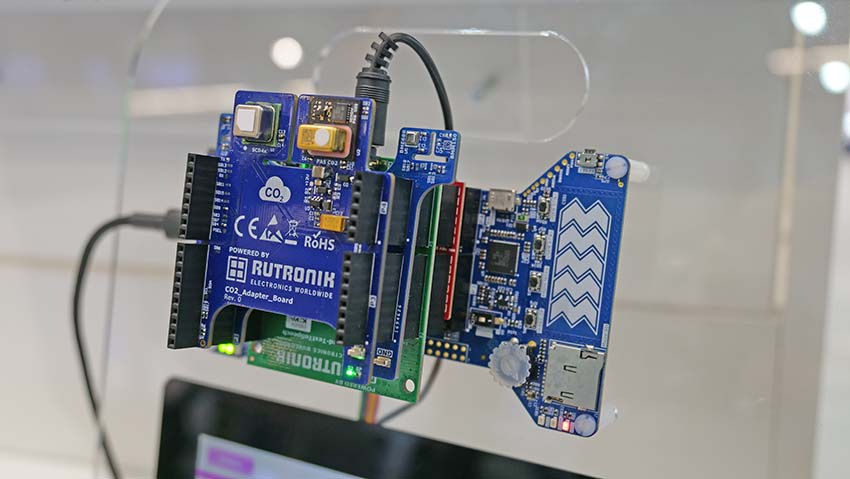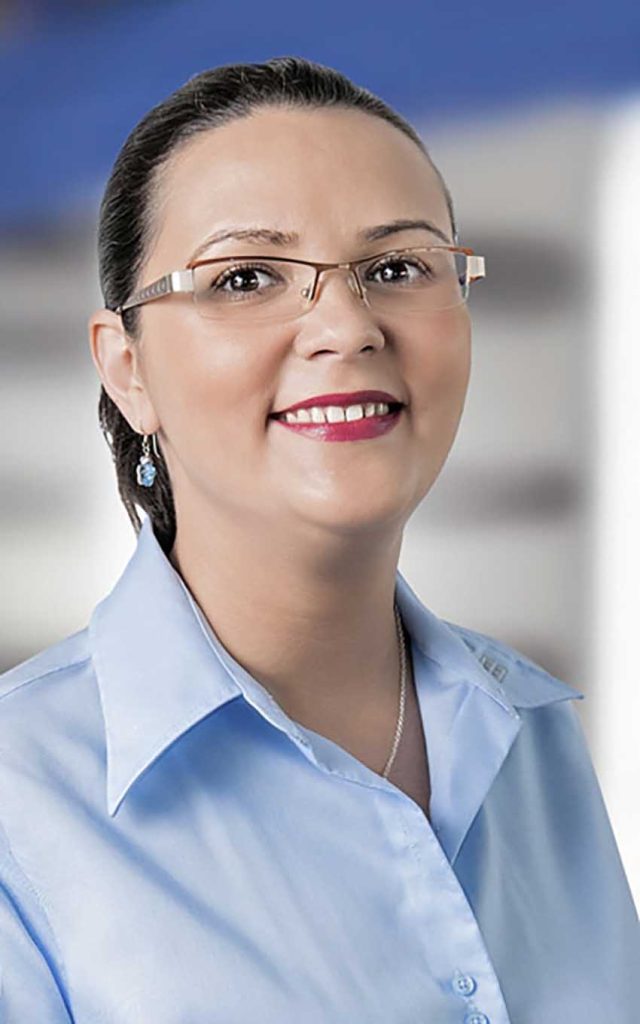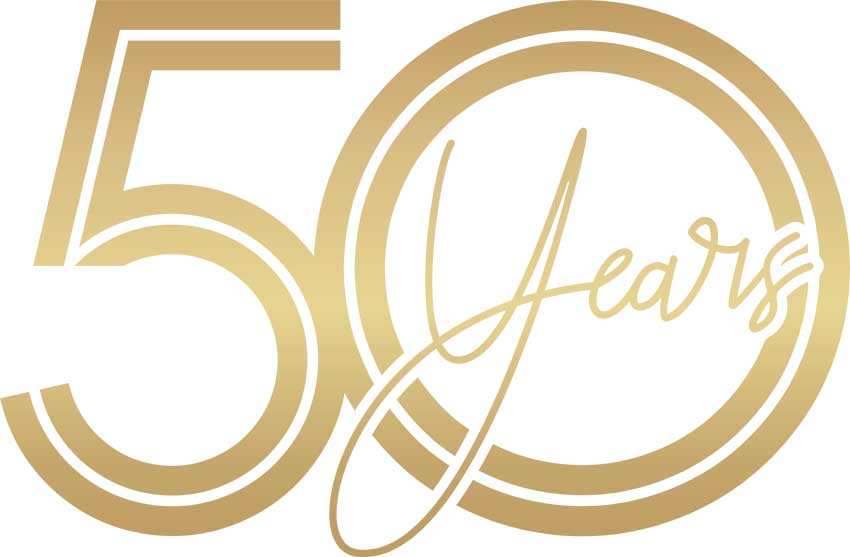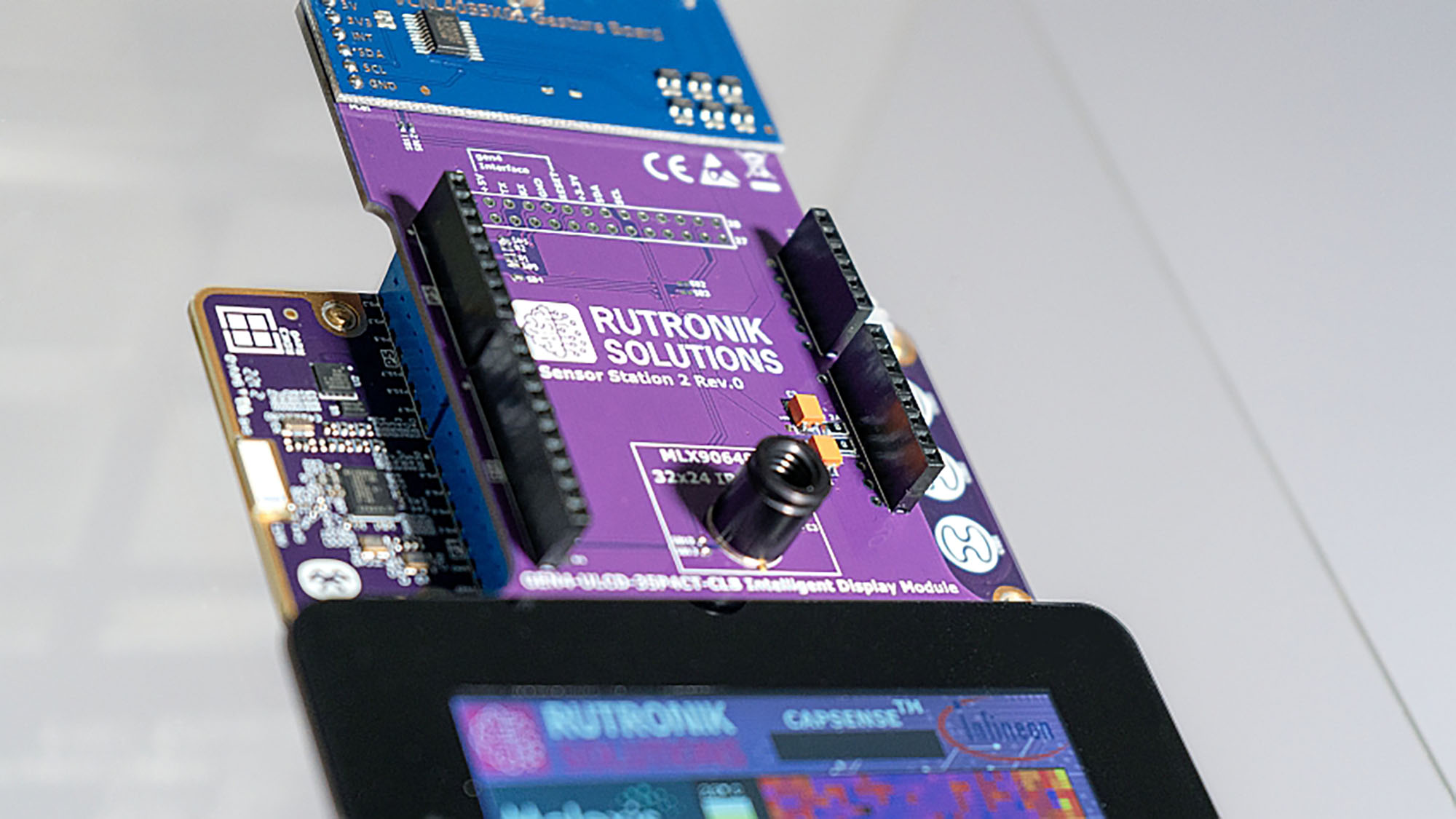Rutronik is an independent family-owned company based in Ispringen near Pforzheim in Germany. The broad product range includes semiconductors, passive and electromechanical components as well as embedded boards, storage technologies, displays, and wireless products.
Interview with Roxana Nita, Country Manager Romania and Bulgaria at Rutronik Elektronische Bauelemente GmbH.
Easy Engineering: Tell us a short story of origin of the company.
Roxana Nita: 50 years ago, in 1973, Helmut Rudel founded Rutronik in Germany. He did not leave the choice of location to chance. The geographically most distant customers were to be reached within a maximum driving time of two hours. With this goal in mind, he took a compass and drew a circle around the region in Germany where, at that time, he accounted for almost 70 percent of the German demand for construction elements. In the middle of this circle was Ispringen, and thus the decision for the headquarters was made. Rutronik now employs around 1,900 people in more than 80 branches and logistics centers worldwide.
In 2005, the decision was made to open the first office in Romania, namely in Bucharest. It was not chosen on the grounds that Bucharest is the capital of Romania, but on the grounds that many customers from the electronics industry were located in Bucharest as well as around the city.
Over time, the market evolved more and more and developed in the western part of Romania, and then it was decided to open a second office in Timisoara, the latter becoming the central office in Romania considering the development in this area. Many large companies in the electronics industry have developed and opened in the West in cities such as Timisoara, Arad, Oradea, Satu Mare, as well as in other cities that can be reached quickly from Timisoara.
Since then, the Romanian market has grown more and more, currently the offices in Timisoara and Bucharest support more than 200 clients- local clients with local investment as well as multinationals companies.

E.E: Which are the most significant projects in the history of the company?
R.N: With 50 years as a distributor, there are some significant milestones that have all contributed to our success. In retrospect, we actually see turning points and milestones in every decade of Rutronik’s existence that have shaped us as an owner-managed, independent distributor. A first major milestone was the opening of our company headquarters at Industriestrasse 2 in Ispringen/Germany, three years after Helmut Rudel founded the company. We see the first technological turning point and also milestone in the 1980s, when the semiconductor industry grew rapidly due to the great demand for microchips. When the mobile phone industry experienced its breakthrough in the 1990s with the introduction of the GSM network, digital networks became established and the Internet changed the way we live, Rutronik also expanded considerably in order to help shape the newly emerging markets. Shortly before the turn of the millennium, Rutronik succeeded in becoming one of the leading broadline distribution companies in Europe, with an extensive range of products, components and services.
In 2008, the most emotional milestone for Rutronik and the Rudel family followed: the handover from Helmut Rudel to his son Thomas Rudel. Since then, he has acted as President of the family company. Technologically, the 2000s set the course for wireless communication and information technologies, which is why we founded our wireless division in 2005. And because digitalization does not stop at any market, we set the next milestone in the 2010s, when the upheaval in the automotive industry began. This was reflected first and foremost in innovations around connectivity and the internet-based linking of vehicles, as well as the development of alternative drive systems. With our Automotive Business Unit, founded in 2014, Rutronik has an internal specialization that focuses explicitly on the procurement and development structures of customers in the automotive sector.
Artificial intelligence, big data, robotics and human-machine interfaces, automation and Industry 4.0 – here we have the next milestone, which we are currently addressing and will continue to address in the coming years. In addition, there is the changing use of resources and the associated environmental protection, the ever-changing global markets, challenges in procurement due to political circumstances… there are still some milestones waiting for us.
E.E: What projects were the most challenging
R.N: Here I am thinking above all of the economic crisis of 2008 / 2009, when the distribution sales volume (DTAM, Distribution Total Available Market) in the German electronics and electrical industry fell to a record low of just over € 2.5 billion. The global economic crisis and the associated negative trend with regard to price structures have reduced margins enormously. This low challenged many companies to move out of their comfort zones or fall victim to the crisis. In addition to the classic distribution services, the “extras” then became the decisive factor in where and whether a customer would buy. A stable logistics system was no longer sufficient. Rutronik’s strength was, and still is, in knowing and analyzing the market and, above all, the coming developments and trends in detail. Accordingly, we are able to adapt our business model at an early stage, supplement services and set our own beacons with which we differentiate ourselves from competitors and survive crises.

E.E: The most challenging periods in Romania were:
R.N: Allocation on passive components in 2018: Thanks to the strong relationships of Rutronik with manufacturers, we managed to support deliveries to customers so that the production lines work as much as possible by delivering partial quantities.
The start of the pandemic in 2020: Following the lock-down, people had to work from home, the lack of human contact was one of the hardest periods. But we remained optimistic and got over this impasse well and the fact that we returned to the offices made us see life with different eyes, to appreciate contact with people much more and to enjoy every day together. From a business point of view, this pandemic has affected us because, after it, the allocation for all electronic components returned at the beginning of 2021. The delivery terms increased a lot because there were still certain areas in the world where they were in lock-down or did not have enough work force or there were strict restrictions and did not allow to work in a regular way.
In 2021, not only the allocation on electronic components affected us but also the transports which were limited and the related costs increased significantly.
E.E: What are the ranges of products and what types of services do you offer?
R.N: Rutronik started in the 1970s with a focus on passive components. Today, our expertise as a broadline distributor is based on an extensive product portfolio covering semiconductors, passive and electromechanical components, embedded boards, storage & displays and wireless products. Today, we serve more than 40,000 customers who are also driving such fast-growing future markets as Industry 4.0, Industrial IoT, Future Mobility and Energy & Power.
Rutronik also develops evaluation and developer boards together with research partners. We have established our own design centers for this purpose in Lithuania and Singapore, which we are currently expanding. We also have a development team at our headquarters in Ispringen/Germany. We rely on close cooperation with our top manufacturers and industry specialists in the development of our solutions, some of which are patented, and we also advise our manufacturers in connection with their development.
The team in Romania at the moment is composed of a number of 8 employees, but also having several open positions so that it can offer the best support to customers.

The target being to reach a number of 15 employees in Romania by the end of 2024.
We offer support as customer service, internal sales, and field sales as well as specialized technical support.
Together with our colleagues from HQ and the support from the manufacturer, we come to meet the customers with various solutions that they need to complete their projects.
Also, having access to various technologies that will appear, depending on the profile of each client, we send newsletters so that we can inform them in advance of what is going to appear on the market.
E.E: What was the research behind the products/solutions and how important is R&D?
R.N: We are a distributor with many added values, but we specifically offer and pursue a “deep tech approach”. In addition, we know that you have an extremely high risk with basic research and basic investigations. At this point, we also want to minimize the technical risk for the client by offering tested and working solutions that are based on scientific findings. And in our market research activities and in our cooperation with colleges and universities, we repeatedly find that there are approaches that have the potential to challenge entire business models, such as printed sensor technology, which could be a game changer in the future.
It is crucial to always be a few steps ahead, which is why we regularly conduct in-depth market research and dedicate ourselves intensively to cooperation with a number of colleges and universities. This is how we keep discovering approaches, such as printed electronics, that have the potential to have a disruptive effect on existing business models and change them in the long term.

E.E: What products / solutions are you going to launch in the future?
R.N: We think in terms of future markets and how they can be interlinked or how technologies can be used and further developed as efficiently and economically as possible.
One example is the cooperation between Rutronik Asia and Elmos Semiconductor, who are jointly developing a development board for automotive customers and thus working on further innovations in the Rutronik System Solutions segment. The collaboration is the joint development of an integrated development board for thermal management systems to help customers address complex thermal management challenges in applications such as electric vehicles. The goal is for customers to be able to work with the board on configurable thermal management systems that can be flexibly integrated.


